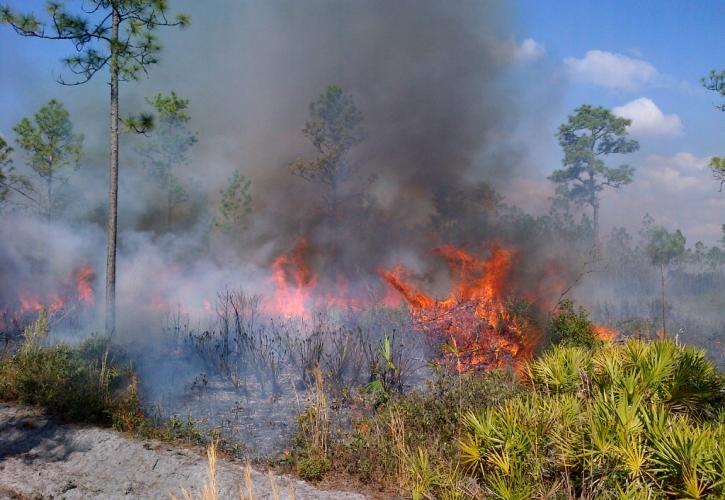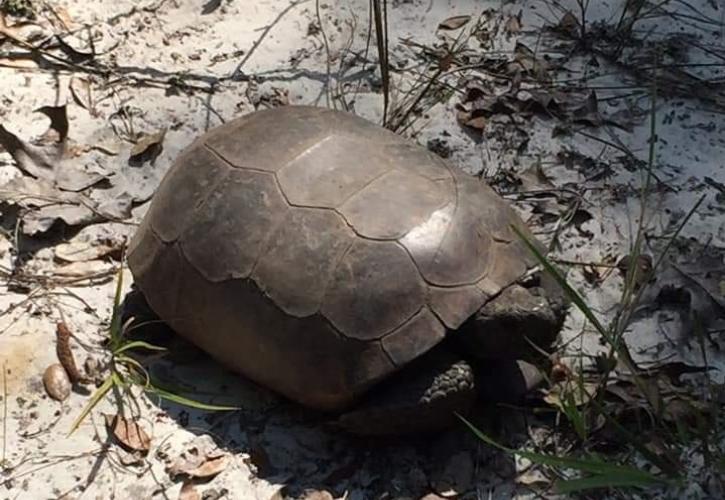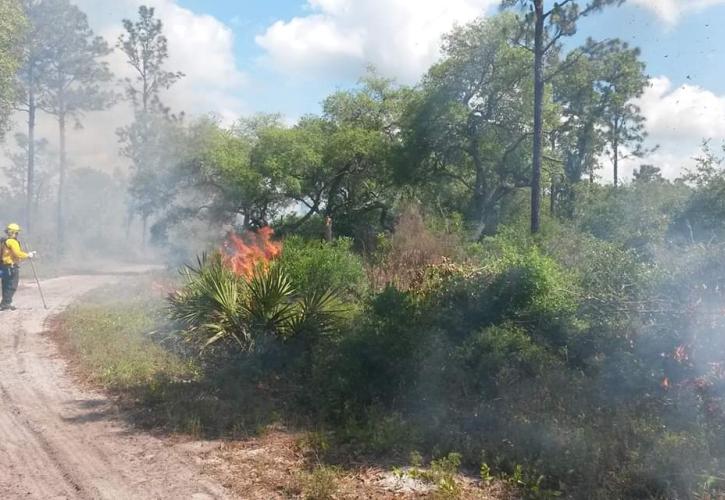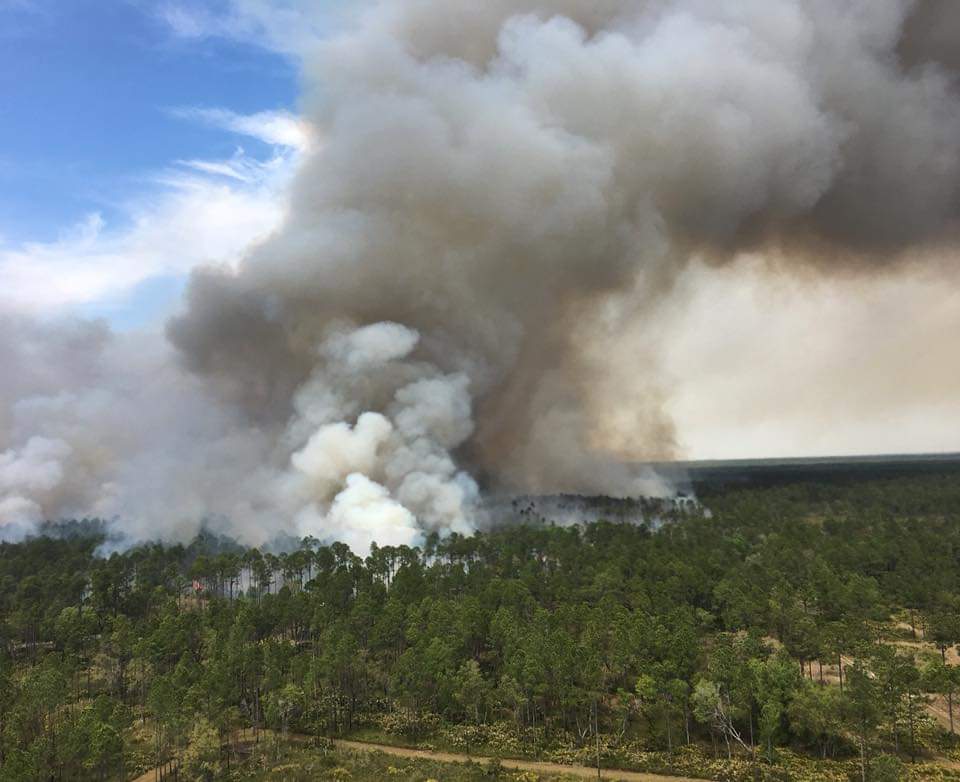
Prescribed Fire at Dunns Creek

For millennia, many of Florida's natural communities and landscapes have adapted to become dependent on fire. Throughout time, lightning strikes have played a pivotal role in sparking the wildfires that Florida ecosystems rely on to maintain balance, promote proper growth and to stay healthy.

Today, due to the threat to human development that fire presents, it is not possible to allow these natural wildfires to spread across Florida. However, land managers have found a way to mimic the natural fires that once burned throughout Florida through prescribed fire.
Prescribed fire is a highly regulated method used to mimic natural, lightning-set fires, which are one of the primary natural forces that once shaped Florida’s ecosystem.
Prescribed fire helps increase the diversity of flora and fauna, restore natural habitats and prevent the spread of invasive species.
Many of Florida’s imperiled species of plants and animals depend on fire for their species to survive and for their natural community to maintain its health.
Prescribed fire is vital in the restoration and protection of the natural communities found at Dunns Creek State Park. The plants and wildlife species that live within these natural communities depend on fire in order to thrive. One such species is the longleaf pine. The longleaf pine has seen a rapid decline over the years.

Once covering over 90 million acres, with a historic range extending from southeastern Virginia to Florida, and west as far as East Texas, the longleaf pine now only covers less than 4% of its original range.
The longleaf pine is a slow-growing tree that can take nearly 150 years to reach full size and is relied on by more than 30 endangered and threatened species for survival, including the gopher tortoise, Sherman’s fox squirrels and the Eastern indigo snake.

When longleaf pine seeds fall to the ground, they must come in contact with soil to germinate. Historically, leaf litter and debris were cleared away by the wildfires sparked by lightning. However, fire is now suppressed, and ground cover often builds up, preventing germination.
Those seeds that do overcome the odds and germinate are intolerant to shade and require sunlight to grow. This can be hindered by the growth of hardwoods and shrubs that can quickly shade out the slow-growing longleaf.
With the lack of natural fires, prescribed fire has become necessary for longleaf pines to flourish. Not only does it provide bare ground suitable for seed germination, but it also keeps fast growing plants at bay, allowing the fire-resistant longleaf full access to sunlight.
Longleaf pines are one of the many plants that rely on prescribed fire at Dunns Creek State Park. In addition, there are many wildlife species at the park that depend on fire in order to succeed, including the endangered gopher frog, brown-headed nuthatch, white-tailed deer, turkey and the gopher tortoise.
Prescribed fire allows for wildlife habitats to be maintained and allows for a boost in food sources.
Contrary to what might be imagined, the black, charred soil after a prescribed fire springs to life within just a few days, bringing with it an abundance of grasses and flowering plants. Fire stimulates the nutrients in the soil and promotes nutritious new growth of grasses, forbs, fruits, seeds and insects, creating a plentiful food source for wildlife.
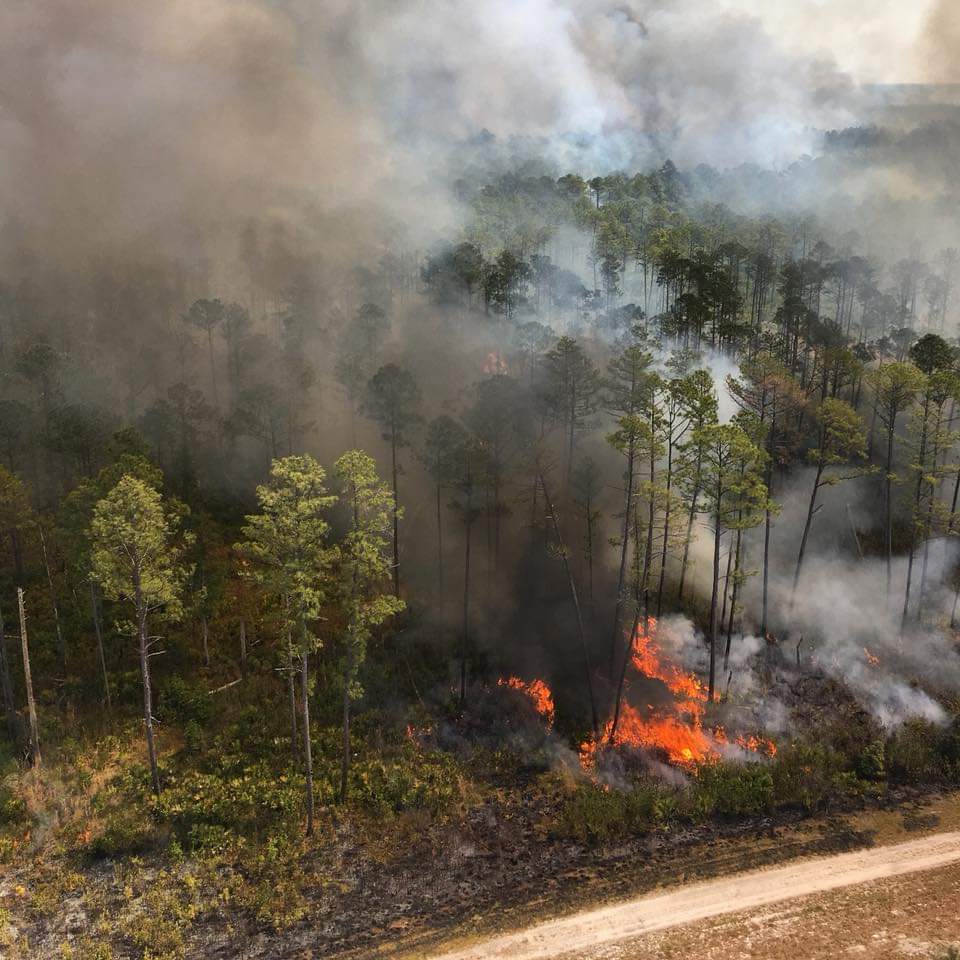
The benefits of prescribed fire not only apply to the plants and animals at Dunns Creek State Park. Prescribed fire is an important tool in the fight against wildfire damage. Without regular fire, an accumulation of flammable vegetation, such as leaves, needles, hardwoods and shrubs, builds to dangerous levels.
These quick-burning fuels, when left unchecked, contribute to the spread and intensity of wildfires. Prescribed fire helps to reduce the amount of debris and flammable materials found in natural areas, reducing the chance of detrimental wildfires.
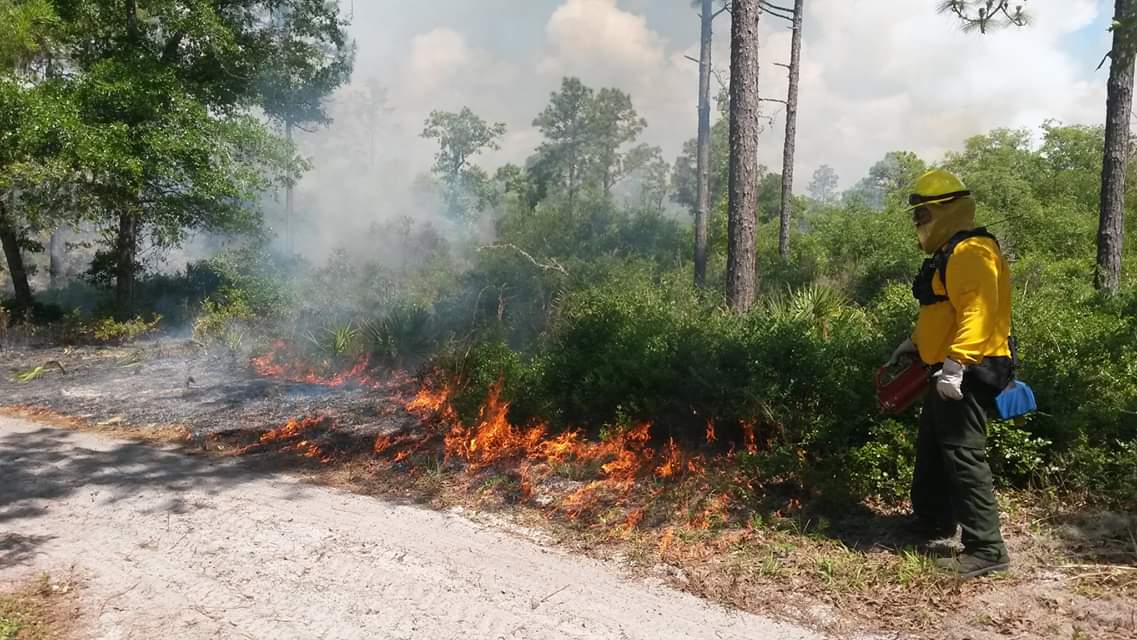
Prescribed fire is a tool that is used often at Dunns Creek State Park to help maintain the park's natural communities, support wildlife and to reduce the chance of a catastrophic wildfire.
A majority of the park’s 6,300 acres are fire dependent, meaning it contains a natural community that relies on fire for health and growth. The park's goal is to apply fire to 700 to 1,900 acres per year at varying intervals depending on the natural community. This is done by highly trained staff following a specific prescription that dictates the proper conditions and methods for safe application of fire.
Burn history, burn objectives, fuel load, weather conditions, wind direction and speed, and public and staff safety are just some of what is taken into consideration when planning a burn. Staff ensure that the fire remains contained until it is fully extinguished and monitors the site for several days after, making sure that safety is a priority.
